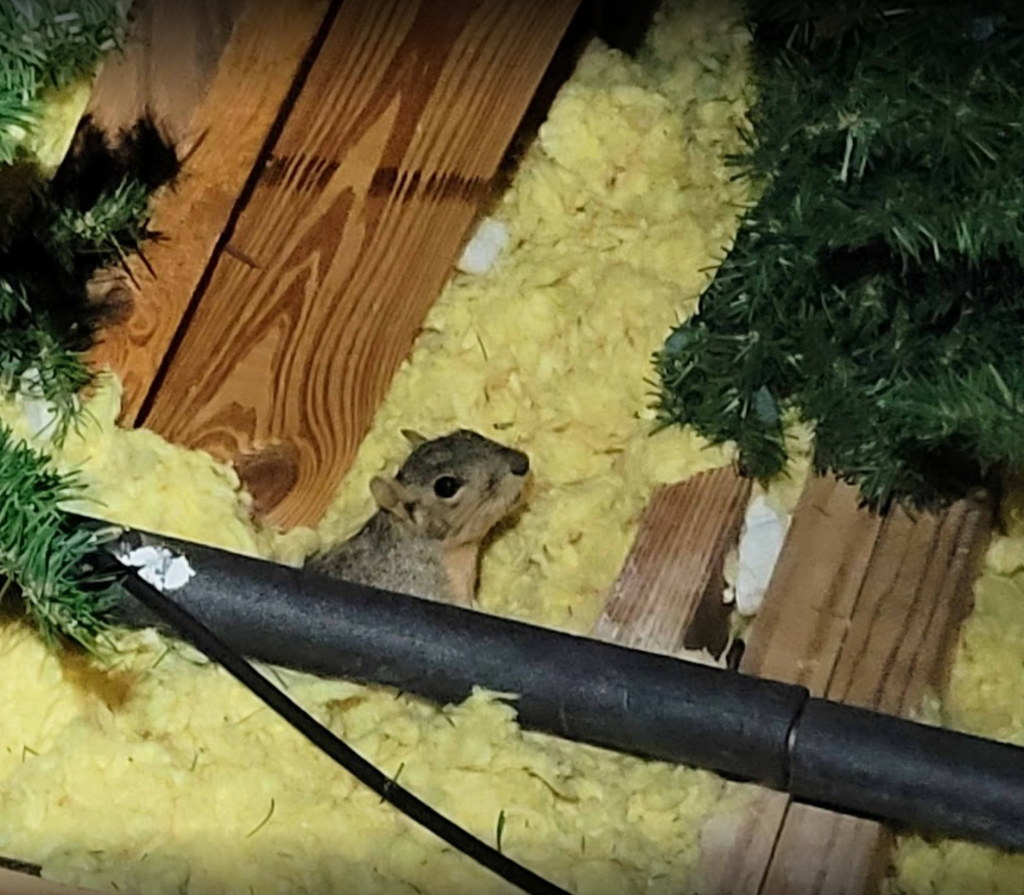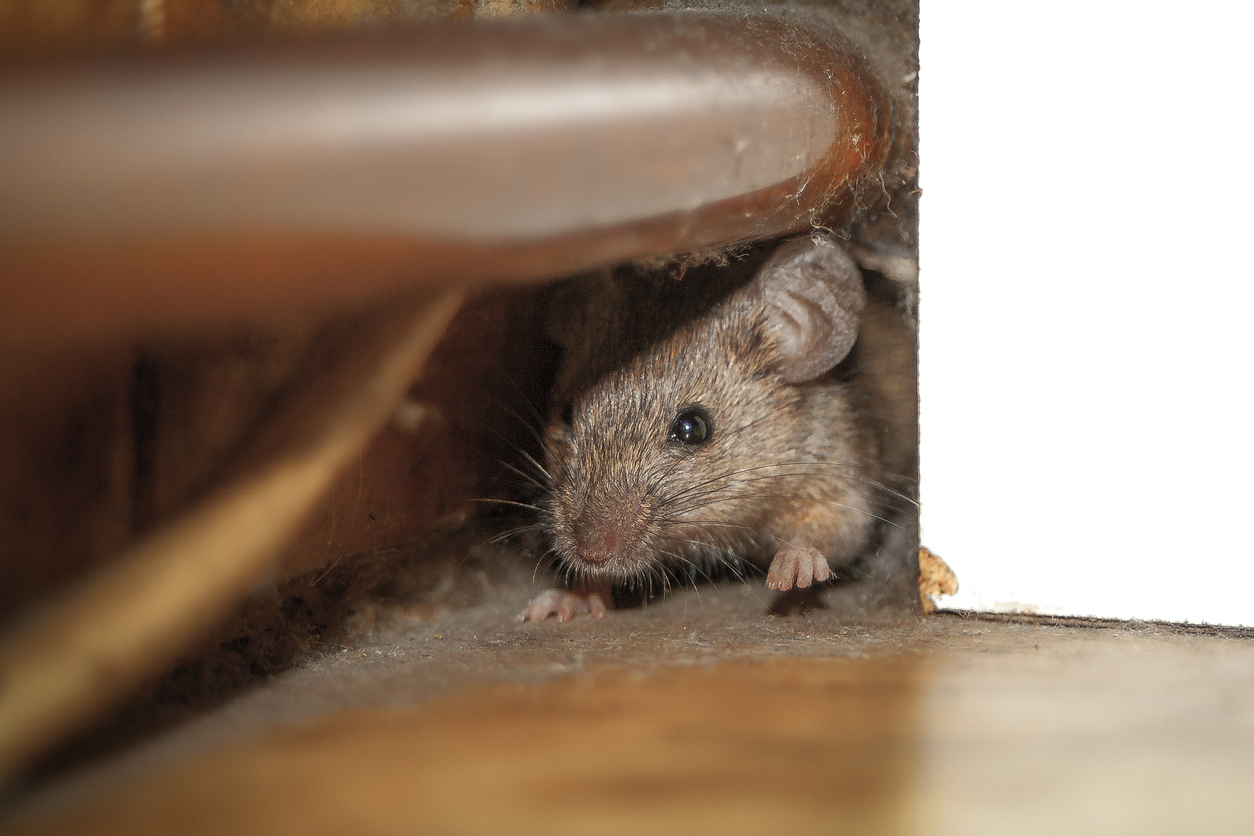.
When you suspect you have uninvited wildlife living in your attic, two potential culprits are squirrels and rats. Homeowners may often mistake one for the other, so understanding the similarities and differences between rats and squirrels can help you identify the infestation you have.
Squirrels and rats are both members of the rodent family and share similar mannerisms, like chewing on various items, being clever and leaving messes if they get into your home. While they have similarities, there are ways you can distinguish them from each other.
Learn the differences between squirrels vs. rats, so you can determine which rodent infestation you have in your attic.
Call Now for Wildlife Removal Service ➔
Signs That Rats or Squirrels Are in Your Walls
Rodents are allusive and often challenging to spot, especially if they’re traveling through your walls. One of the most obvious signs of rodents in your home is scratching noises. Here are some other signs of squirrels in the attic or walls to look out for:
- Droppings: You may notice small brown droppings in your attic and around your home.
- Chew Marks: Rodents are known to chew through wires, wood, and insulation. If you’re noticing chew marks around your home or you’re experiencing electrical problems, a squirrel or rat may be the culprit.
- Foul Odor: Rodents will deposit feces and urine around your home, creating a nasty smell.
7 Ways to Tell the Difference Between Squirrels and Rats in Your Attic
If you’re unsure whether you have squirrels or rats in your house, knowing and understanding the signs of each creature can help you identify which one is in your attic. Here are the primary differences between squirrels and rats that live in your attic.
1. Appearance and Noise
Squirrels and rats are small, furry and often brown, gray or black. Though they have some comparable features, the two rodents are distinguishable by appearance and the noises they make in your attic.
Two common species of squirrels you will likely see include the eastern gray and fox squirrels. Both have big, dark eyes and bushy tails that curl up against their bodies. Squirrels are usually larger than rats. Eastern gray squirrels are often about 12 inches long, while fox squirrels are bigger with a maximum body length of 28 inches. When squirrels communicate, they may make vocalizations or body movements, like flicking their tail.
Like squirrels, there are two common rat species in the south central region of the U.S. — roof rats and Norway rats. Roof rats are black and about 8 inches long with lengthy tails, while Norway rats are brown and about 10 inches long with short tails. Rats make several noises, like squeaking and chattering, to communicate, though some pitches may be unheard by humans. Noises you’ll likely hear from rats are when they scurry around the attic or gnaw on things.
You can generally notice a distinct difference in the sounds a squirrel makes compared to the noises rats make.
2. Behavior and Activity
Squirrels are active during the day, while rats are nocturnal and move around at night. The time of day you hear movement in your attic can indicate which infestation you may have.
Both creatures have different mating habits. Eastern gray and fox squirrels usually mate twice a year, during the late summer and late winter. When they engage in mating festivities, you may hear noises squirrels make before and after mating. Once the babies are born, it can take up to six weeks before they start running around. While squirrels have specific mating seasons, rats mate year-round and can quickly have many babies infesting your home.
3. Diet
Another way to tell the difference between a squirrel or rat infestation is the diet they sustain themselves with. Both squirrel species are mainly herbivores and collect nuts, seeds and other plant materials to hoard in caches. If you have a squirrel infestation, there will likely be caches around your attic.
Rats will eat anything available to them. Although both roof and Norway rats are omnivores, roof rats favor nuts and fruits while Norway rats prefer cereal, grains and even pet food.
4. Nesting Habits
Finding a nest in your attic could also indicate you have an uninvited visitor living in your home. Squirrels and rats both build nests, but they use different materials to construct them. A squirrel’s nest may include twigs, moss or leaves, while a rat’s nest can consist of insulation, cardboard, cloth or almost anything they can gather.
Both squirrels and rats typically build their nests outdoors, but there are chances they could choose your attic instead. If you suspect you have a rat infestation, look around the space closely because they keep their nests well-hidden in crawl spaces, walls and even insulation.
5. Tracks and Prints
Both animals leave tracks after walking around in your attic. They each have distinguishing prints. Squirrels’ front feet have four toes and their back feet have five toes. They are bound as they move, so their back feet are in-line with their front feet as they leap. Rats don’t hop and instead scurry around, usually in straight paths. You can tell a rat has been around by the tracks they leave from their tails or grease spots on walls from their oily fur.

6. Squirrel vs. Rat Droppings
Determining the difference between squirrel poop vs. rat poop can be challenging due to their similarity. However, there are differences between them that tell you if it’s a rat or squirrel dropping. Both are narrow, medium length and dark brown or black. The biggest difference between the two is the size. Squirrel droppings are naturally larger than rats with rounded ends compared to the pellets rats drop with more pointed ends.
Avoid touching any rat or squirrel droppings or the area around them if you find droppings in your home. Rodent feces can carry diseases harmful to human health.
7. Damage
Animal infestations can damage your home in many ways. Squirrels and rats chew and gnaw on wires, pipes and wood in your home. Squirrels can damage your home’s interior and exterior. If they found or created an entry point into your attic, they most likely gnawed at the siding of your house to create holes big enough for them to get through.
Rats can damage your home too. Their tendency to chew items in your attic and leave droppings throughout your house can lead to physical damage for your home and health concerns for you and your family. You may find small entry points rats made to get in and out of your home, like burrows or holes in the yard that lead to your home.
Contact Urban Jungle for Squirrel and Rat Solutions
If you notice signs of rats or squirrels living in your home, ensure a safe and thorough removal with a professional wildlife removal company. Urban Jungle Wildlife Removal can help you get rid of rats and squirrels in your attic. Our employees are biologists who know how to identify and provide solutions to your squirrel or rat infestations. We ensure your home or business is safe and wildlife-free with our trapping and removal services.
To start finding a solution for your squirrel or rat infestation, reach out to us to schedule a service today!

